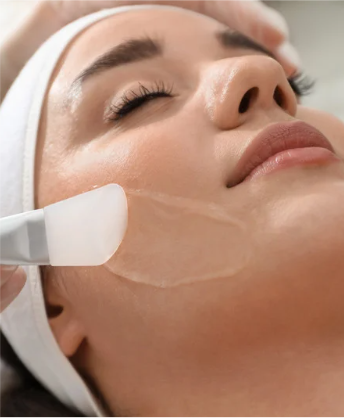
Why Skin Peel Treatments Are a Must for Brighter, Healthier Skin
Looking for a game-changer in your skincare routine? Whether you’re struggling with dull skin, breakouts, or fine lines, skin peel treatments—also known as chemical peels—can help transform your complexion from tired to radiant.
These professional exfoliation treatments go beyond regular scrubs and masks by working deep within your skin to improve tone, texture, and brightness.
If you’re aiming for glowing skin, clearer pores, and a smoother texture, keep reading to learn why chemical peels are one of the most effective skin resurfacing treatments available.
What Is a Skin Peel Treatment and How Does It Work?
A skin peel is a cosmetic skincare treatment that uses exfoliating acids (such as glycolic, lactic, or salicylic acid) to remove the outermost layers of dead skin cells. The process stimulates cell turnover, boosts collagen production, and reveals a fresher, more youthful layer of skin beneath.
Here’s how the skin peel process works:
This process is repeated over several sessions, with the tattoo fading progressively after each treatment.
Benefits of Skin Peel Treatments for Glowing, Healthy Skin
Searching for the best way to achieve radiant, healthy-looking skin? Here’s what makes chemical peels so effective:
Brightens Dull Skin – Removes dead skin buildup for a natural glow.
Fades Pigmentation – Helps lighten dark spots, sun damage, and acne scars.
Improves Skin Texture – Softens rough patches and smooths uneven skin.
Anti-Ageing – Reduces the appearance of fine lines and supports collagen regeneration.
Controls Acne and Breakouts – Clears pores, calms inflammation, and reduces oil production.
Boosts Product Absorption – Your skincare works better on freshly exfoliated skin.
WHO SHOULD AVOID LASER TATTOO REMOVAL?
Peels range from:
Peel
Light
A specialist will assess your tattoo, skin tone, and health history.
Peel
Medium
A numbing cream may be applied to minimise discomfort.
Peel
Deep
The laser is moved over the tattooed area, delivering short bursts of light.
Each session lasts between 10–30 minutes, depending on the tattoo’s size and complexity. Most patients can return to their normal routine immediately afterward.
What to Expect During a Laser Tattoo Removal Session
The idea of undergoing Laser Tattoo Removal can be intimidating if you’re unsure of what’s involved. But the treatment is quite straightforward.
How Many Sessions Are Needed for Complete Removal?
The number of sessions needed for full Laser Tattoo Removal varies from person to person. Some tattoos may fade significantly after just a few sessions, while others might require more.
FACTORS THAT AFFECT REMOVAL:
On average, people require 6 to 10 sessions, spaced about 6–8 weeks apart for optimal fading.
Does Laser Tattoo Removal Hurt?
Pain tolerance varies, but most people compare Laser Tattoo Removal to the sensation of a rubber band snapping against the skin. It’s uncomfortable, but manageable — especially with modern numbing creams and skin-cooling technology.
TO MINIMISE DISCOMFORT:
As your tattoo fades with each session, many people find the pain becomes less noticeable over time.
More FAQ
Are There Side Effects?
Most side effects from Laser Tattoo Removal are mild and temporary. Some of the most common reactions include:
- Redness and swelling in the treated area
- Minor blistering or scabbing
- Temporary skin darkening or lightening
- Mild itching as the skin heals
These effects usually resolve on their own within a few days to a week. Following your aftercare instructions is essential to ensure smooth healing and minimize any risk of infection or scarring.
Aftercare Tips for Faster Healing
Taking good care of your skin after Laser Tattoo Removal helps speed up the healing process and reduces side effects.
Key aftercare practices include:
- Keep the area clean and dry for the first 24 hours.
- Avoid sun exposure, saunas, or swimming pools for at least a week.
- Apply antibiotic ointments as directed.
- Don’t pick at scabs or blisters — let them heal naturally.
- Your provider will give you a detailed post-care guide tailored to your skin and treatment plan.
Conclusion: Is Laser Tattoo Removal Right for You?
Whether you want to completely erase your tattoo or just lighten it for a cover-up, Laser Tattoo Removal is the most advanced and effective solution available today. It provides a safe, customizable, and long-lasting way to reclaim your natural skin. With each session, you’ll get closer to a fresh start — one where your skin tells the story you want it to.
If you’re considering tattoo removal, always seek treatment from licensed professionals who use modern laser technology and follow strict safety standards. Your skin deserves the best — and Laser Tattoo Removal can deliver exactly that.
